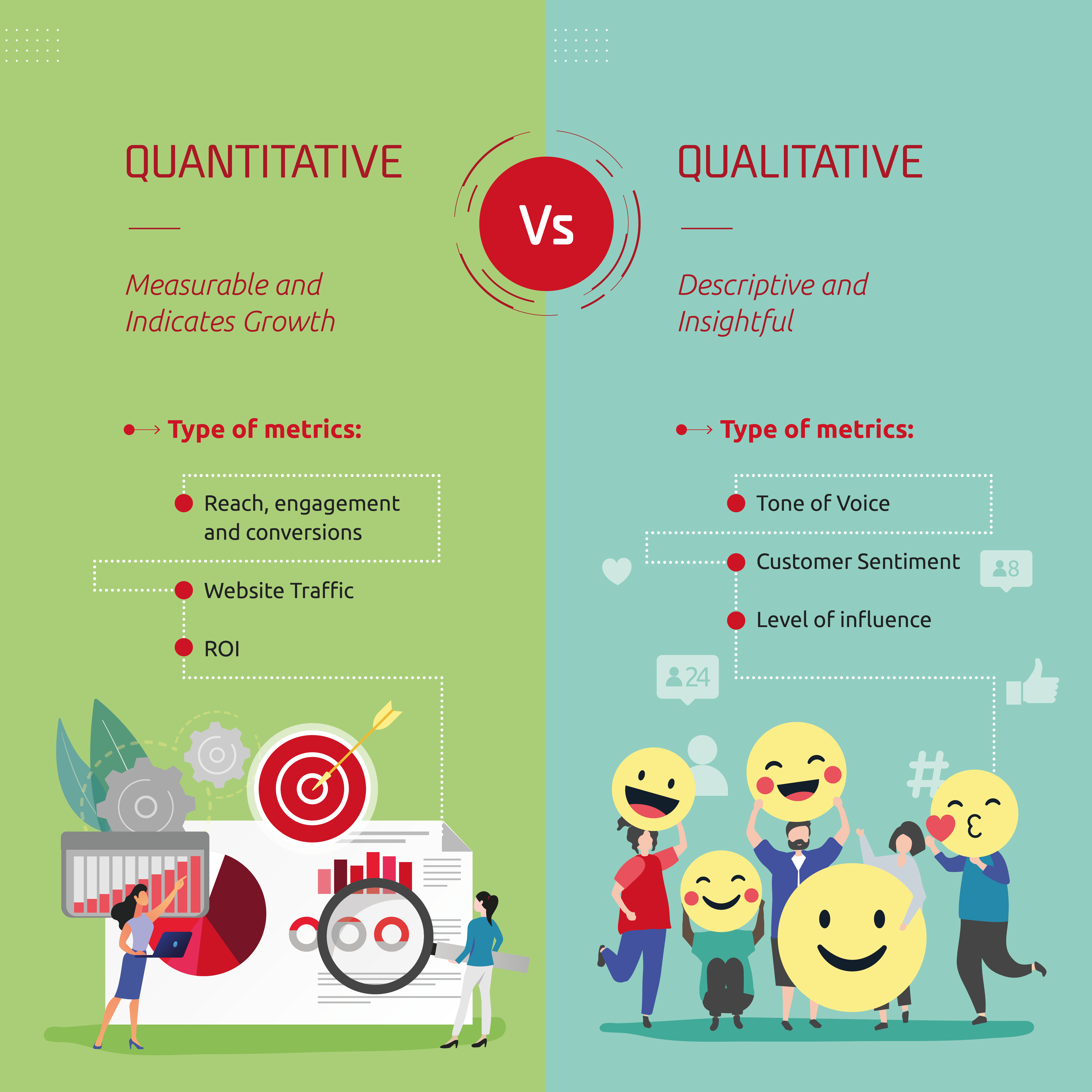
Social media marketing doesn’t need to be a guessing game. Keep reading and discover how you can ensure your social media efforts are yielding the best results.
5 Simple Steps to Social Media Benchmarking
You can always take a quick glance at your follower count or engagement rate to see if it’s increased within the past 30 days and deem that as either “successful” or not, but how is that going to help better your social media content or measure return on investment?
Instead, benchmark your social media against your competitors and leaders within your space, and then make data-driven decisions to advance your own social media.
As marketers, conducting competitive benchmarking is nothing new. We already use it to measure our other marketing efforts, like SEO and advertising, so why not take the same approach with social media?
A recent survey conducted by Sprout Social found that “60 percent of executives identified investing more resources into social media as a key way to gain a competitive edge.”
Below, we’ve outlined 5 easy steps that you can use to develop your benchmarking exercise. Let this article be your ultimate social media benchmarking guide!
1. Identify Your Competitors
It’s important to take time to decide which competitors to track. Typically, we encourage our clients to choose between 3-5 competitors that fall into different levels of competition. For example, you can choose a company with whom you are in direct competition, is the same size and has a similar revenue, or you can choose a company that you aspire to be like, which is larger and has more social influence.

Ultimately, it is your choice which competitors you want to track.
2. Determine Your KPIs
Quantitative metrics are measurable and indicate growth like website traffic or ROI. Qualitative are descriptive and insightful, such as tone of voice or customer sentiment.
When choosing which metrics to track, you need to look at your business and social media goals. See what KPIs you currently have in place and how you are measuring your ROI.
The metrics we usually measure include follower count, follower growth, number of posts, reach, and engagement rate, but you don’t have to just choose quantitative metrics. You can gather qualitative metrics, as well, such as tone of voice, quality of photos or videos, and how your competitors are interacting with their followers through comments and mentions. This kind of data can help you craft social media content that is more effective for engaging with your audience.

3. Conduct Your Analysis
There are two options to choose between when gathering data for your benchmarking analysis. You can either go with the manual approach or the automated approach.
As you may assume, the manual approach takes significantly more time and there are limitations to the type of data you can gather. But, if you have a limited marketing budget, this may be the only option available to you. Some places you can gather data from are Google Analytics, LinkedIn or Facebook Insights.
Another downside to this approach is figuring out how you will display all of this data. Many choose to build out their own reports, while some who are more daring and have more time on their hands choose to build complex interfaces. We have developed our own reporting module that allows our clients to track their KPIs and receive customized reports on a monthly or quarterly basis. This service is called the Marketing Health Check. If you would like to learn more about this service, please drop us a line.
The easier approach is finding a tool that can automate all of this work, but again, this will be the more expensive option. There are hundreds of social media benchmarking applications you can choose from. Each tool has its own capabilities and limitations to gathering and displaying data. It’s extremely important to do your research and pick the tool that best fits your needs.

Here are a few social media benchmarking tools you can choose from:

4. Update Your Social Strategy
Now that you have gathered all this data, it’s time to do something with it! After reviewing your data, it should be clear where you need to make changes to your social media strategy. This is a good time to update your goals or set new ones.
When setting goals, you want to make sure they are SMART goals. This acronym stands for Specific, Measurable, Attainable, Relevant and Time-based. By developing objectives in this way, you are more likely to achieve them.
5. Establish Social Listening Practices
This last step is often overlooked but is very crucial to creating a healthy and dynamic social media presence. Through social listening, you can stay on top of trends, discover what conversations your fans or prospects are engaging with, and gather more data on your competitors.
When deciding which benchmarking tool to use, we suggest seeing if they have a social listening component. Keep in mind, there will likely be an additional fee when adding this new feature.

Social media benchmarking is not a one-time project. This is an exercise we encourage you to conduct on an annual or biannual basis. By continuing with this process, you are guaranteeing fresh and timely content for your followers and providing your stakeholders with concrete results.
As we mentioned before, social media is always evolving. Make sure you are seeing an actual return on investment for all your social media efforts.
Looking for more marketing expertise?
Sign up for our newsletter
"(Required)" indicates required fields
YOU MAY ALSO LIKE…

How to add Video to your Digital Marketing Strategy
Digital marketing without video has become unthinkable. Now more than ever, marketers are using video to get their message across.
Read more
